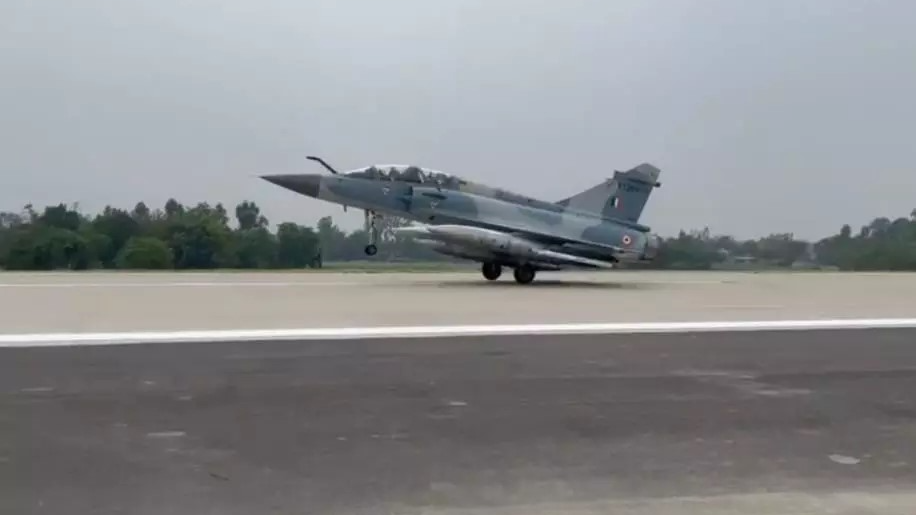

Indian Air Force Conducts Historic Night Landing Drill on Ganga Expressway
In a significant demonstration of operational capability and strategic infrastructure development, the Indian Air Force (IAF) successfully executed a first-of-its-kind exercise involving night landings of fighter aircraft on the Ganga Expressway in Uttar Pradesh on Friday, May 2nd. This landmark "land and go" drill, conducted on a specially prepared 3.5-kilometre airstrip section in the Shahjahanpur district, tested the expressway's potential as an emergency landing facility capable of round-the-clock operations.
IAF Advanced Capabilities
The exercise featured a comprehensive display of IAF assets, including frontline fighter jets such as the Rafale, Sukhoi-30 MKI, MiG-29, Mirage-2000, and Jaguar. Transport aircraft like the C-130J Super Hercules and AN-32, along with Mi-17 helicopters, also participated. The drill included various manoeuvres like low fly-pasts, landings, and take-offs conducted during both day and, crucially, night phases. The night landing segment, conducted under moonlight between 9 PM and 10 PM, specifically highlighted the IAF's advanced night-flying proficiency and the airstrip's unique 24/7 operational design – a first for an expressway airstrip in India.
Strategic Infrastructure
This airstrip is part of the nearly completed 594-kilometre Ganga Expressway connecting Meerut and Prayagraj. Designed for dual use, it enhances India's defence logistics capabilities by providing an alternative runway during emergencies or wartime scenarios, while also potentially serving a vital role in disaster relief operations. The successful execution of both day and night drills validates this strategic infrastructure asset. :
The successful demonstration, witnessed by officials and enthusiastic crowds, marks a significant milestone in India's defence preparedness. The ability to conduct fighter operations, including complex night landings, from an expressway significantly boosts the IAF's strategic flexibility and underscores the growing synergy between civilian infrastructure and national security requirements.